Samsung finally made the Galaxy Note FE (Fan Edition) available in the Philippines last October. It pays homage to the original Galaxy Note7 that had a short-lived run last year.

There’s not a lot of difference between the Galaxy Note7 and the Galaxy Note Fan Edition. There’s actually just two noticeable difference — the lower-capacity battery (3,200mAh from 3,500mAh) and the latest Android update (Nougat from Marshmallow). The dimensions are also exactly the same except for the net weight that went down a bit (167 grams from 168 grams, due to the reduced battery).
The name Galaxy Note Fan Edition (Galaxy Note FE) was carefully made to avoid the connection to the original Note7 (since airlines continue to ban them in the cabin) yet resembles a tribute to the fans who really loved the original one.

So here you are — a slightly revamped version of the original favorite at a slightly lower retail price. Besides, Samsung had millions of unshipped and recalled units and it would be a waste to jump dump them all in a landfill. Re-assembling all of them with a new and much safer battery was the logical thing to do.
We suggest reading up on our full review of the Galaxy Note 7 since around 70% of our review will be similar.
Design and Construction
This is the same old Galaxy Note design that everybody really loved — a large screen in a compact body. The 5.7-inch screen might not be that huge in 2017, considering the Galaxy S8 has 5.8 inches and the Galaxy S8+ has 6.2-inches, the Note FE is not far off.
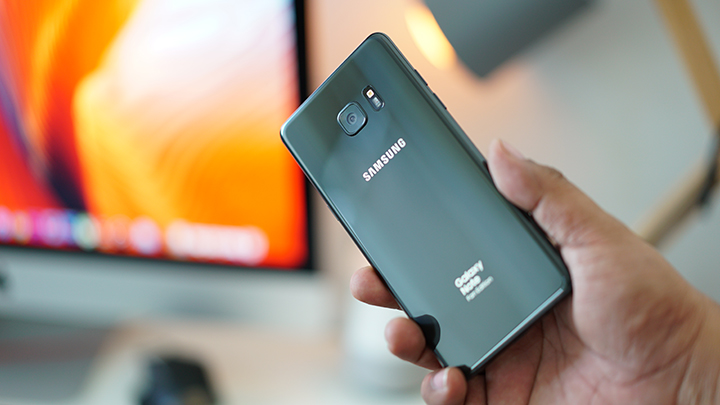
Before moving to the 18.5:9 aspect ratio, the Note FE can be considered as among the best-looking device with a 16:9 aspect ratio. The 79% screen-to-body ratio is actually impressive (current 18:9 devices are around 82%) since the fingerprint sensor and home button are still at the front.
The power button is found on the right side while the volume controls are on the left. The SIM card slot is up top along with the noise-canceling microphone. At the bottom end are the 3.5mm audio port, primary mic, speaker grille and the USB Type-C charging port. The slot for the stylus pen is also found in the bottom right corner.
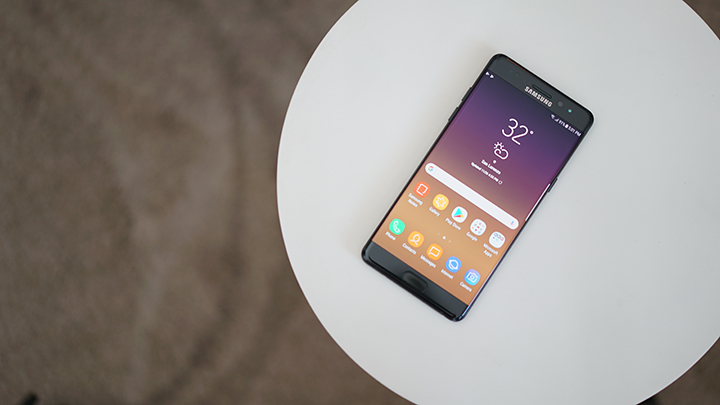
Up at the front is an all-glass panel protected by Gorilla Glass 5. While the edges are curved, they’re not as pronounced or curvier than the Galaxy S7 Edge. While looking very similar to the S7 Edge, the profile is still distinct.
The front camera, sensors, and loudspeaker are at the top corner while the home button/fingerprint sensor is at the bottom corner. We really missed the physical home button and fingerprint sensor at the front. It’s easy and quick to use and unlock the phone and also serves as a shortcut to launch the camera app (just a quick double-tap).
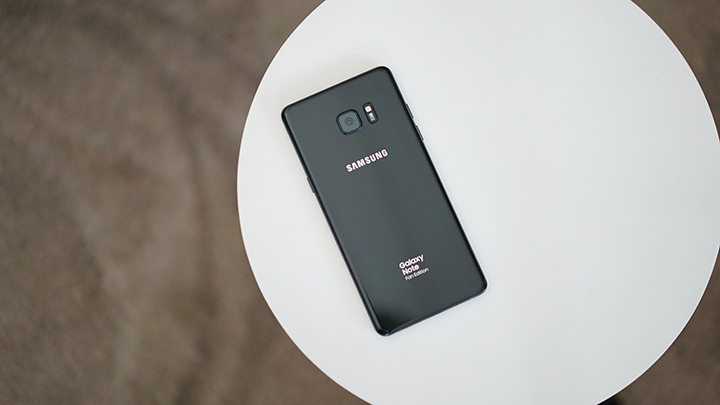
The back panel is all glass as well, protected by Gorilla Glass 5. A single camera is right smack in the middle with the dual-LED flash right beside it along with some sensors. The Samsung logo sits below the camera module and far down is a label printed in large bold letters “Galaxy Note Fan Edition”. Samsung does not do this before but it has to properly label the Fan Edition so that people will not mistake it for the recalled Note7 (spares you the headache at the airport as well).
There will only be one storage variant and that’s 64GB although upon inspection available space is only 52.3GB and 571MB is allocated as reserved space. The internal storage is complemented by a microSD card slot that supports up to 256GB capacity.
The Note FE is also IP68 rated with dust and water-resistance of up to 1.5 meters for as long as 30 minutes.
Table of Contents
Maintaining the 5.7-inch display size, Samsung uses the same Super AMOLED technology in the Note FE with a quad HD resolution of 2560 x 1440 pixels giving it a pixel density of 534ppi.
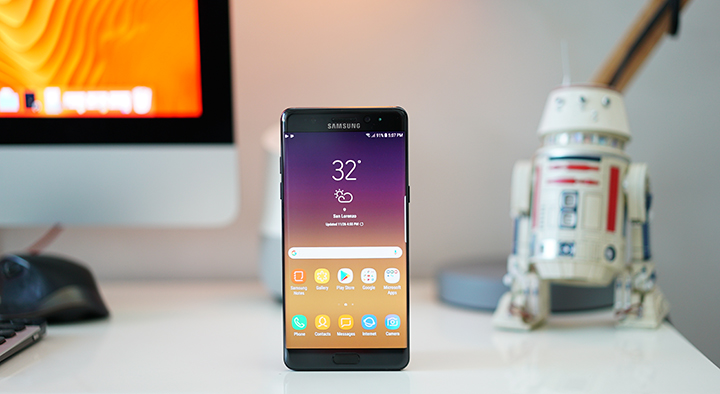
Samsung was the first one to use Gorilla Glass 5 on the Galaxy Note and continues to do so with the Note FE. Both the front panel and the back panel are protected with a layer of Gorilla Glass 5. Corning claims Gorilla Glass 5 can survive up to 1.6-meter or shoulder-height drops onto hard, rough surfaces up to 80% of the time.
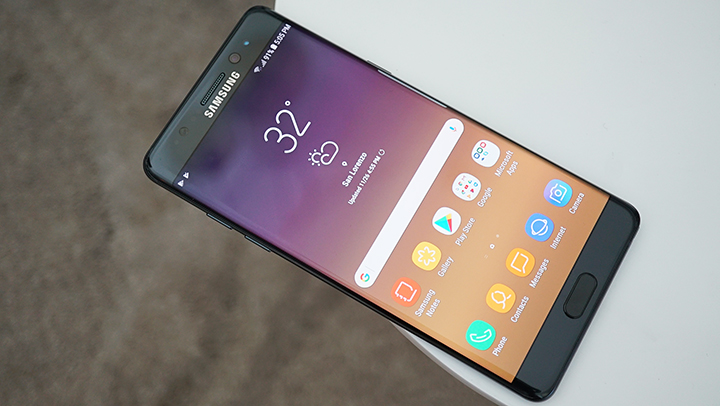
The screen also features a Blue Light filter (available via the drop-down shortcut window) to help ease the strain on the eyes especially when viewing the screen in the dark.
The single speaker grille at the bottom produces really loud and balanced sound. Audio quality is pretty good and ideal even for watching a movie or streaming YouTube without any earphones.
The S Pen stylus is very useful for taking notes, sketching or drawing, and adding a few more productivity features only unique to the Galaxy Note series.
Samsung used the same exact camera in the Galaxy S7 with the Note FE — Same dual-pixel technology and HDR video tucked inside the 12MP rear sensor. In fact, they even used it with the Galaxy S8 and S8+ earlier this year.
As such, we thought we didn’t have to dwell much further in this section except for some sample photos and videos as well as improvements in the native camera app of the device. Basically, all the settings have been hidden in swipes. Swipe to the left for the modes; swipe to the right for the filters, and swipe up and down to alternate between front & rear cameras.
There’s 4K video recording at 30fps and you can also do slow-mo or time-lapse as shown in the sample video above.
The device came with Android 7 Nougat right out of the box with Samsung’s TouchWiz UI layered on top. While there’s really not that much design improvement from the previous version, the focus was making the S Pen more useful and incorporating all of the Edge Panels into the Note FE.
The Always On Display now supports 3rd-party apps so you can see notifications from chat apps and messengers even if the screen is off. The same is true with music players — you can see what’s currently playing and even control playback from the “Off” screen.
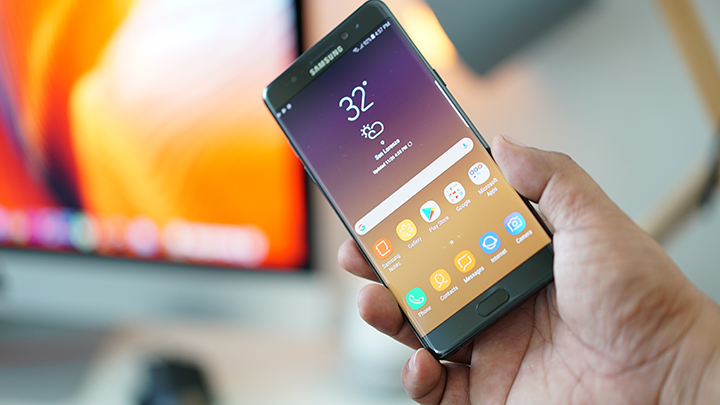
Aside from the Smart Select we first saw in the Note 5, the Note7 also feature Smart Video Select. This feature allows you to select a portion of the video and save it as an animated GIF which you can then post Facebook or Twitter.
The old S Note has been replaced with Samsung Notes (no more memo app, action memo, S Note and scrapbook) which is a more integrated shortcut menu for the S Pen. Again, there’s also a translator now for the S-Pen.
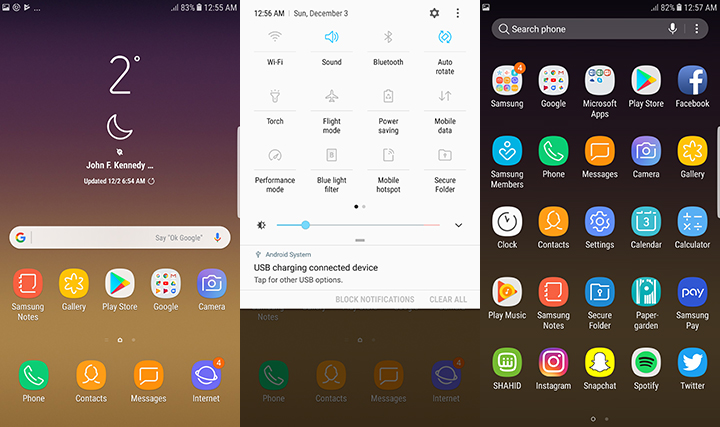
What hasn’t changed is the Edge functionality. You can peak through notifs while the screen is off, it lights up when new ones come and the phone is facing down, and the Edge Panels are basically the same. However, having the S-Pen and the Edge over to the side can be a little messy, so we just deactivated it after a while.
The Iris Scanner software also covers the basics, and it works incredibly well. However, the functionality is limited by software too as it stutters sometimes, and we’re not entirely sure if it is faster than just a fingerprint scan. It’s very useful, however, for features like Samsung’s Secure Folder for apps – not for phone unlocking.
Samsung still used the Exynos 8890 octa-core processor for the Note FE. This is paired with an outdated Mali T-880 GPU, 4GB of RAM and 64GB of storage.

Benchmark scores have slightly improved, courtesy of the more optimized Android 7.1 Nougat. Here are the results:
Antutu Benchmark: 140,363
PCMark: 5,127 (Work 1.0), 4,829 (Work 2.0)
Geekbench: 1,910 (Single core), 5,649 (Multi core)
Except for Antutu which scored a bit higher (by 6,000 points), the benchmark scores of the Galaxy Note FE remained the same. Back then, the Mali-T880 GPU is still one of the top mobile graphics processor but it’s not as competitive anymore especially that Mali already has the G71 and G72 GPUs out on many other flagship smartphones.
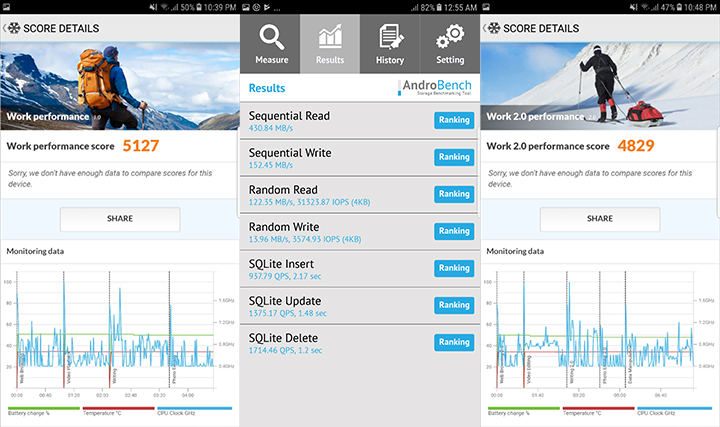
The Galaxy Note FE is still a good-performing device even by today’s standards but don’t really expect a lot from it.
Call quality is good and voice calls are clear and crisp. The dual nano-SIM tray supports LTE on both SIM with the second SIM able to handle up to 256GB of microSD card. There’s fast WiFi 802.11ac, Bluetooth, and NFC. The Heart Rate sensor is also integrated into the rear LED flash of the device.
The physical home button of the Note7 also serves as the fingerprint sensor. It’s now faster, just like the ones in the S7 and S7 Edge. However, for extra security, Samsung has also incorporated an Iris scanner which is another first for Samsung.
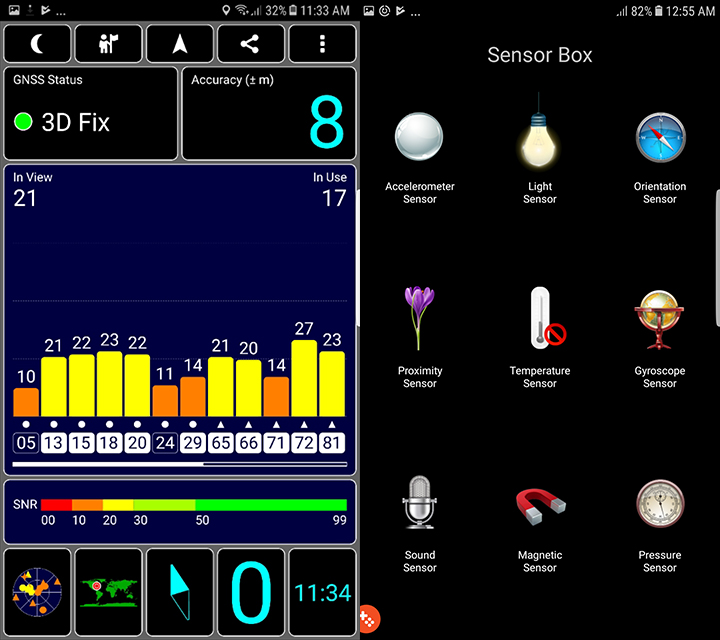
The Iris scanner takes a retinal scan of the user and uses it to unlock the phone. The sensors are located at the top corner of the display. Based on our tests, the Iris scanner is very accurate and fast. We even tried using it in a dark room and it still managed to identify and scan our eyes.
The Galaxy Note FE has a slightly lower capacity battery. This was reduced from the original 3,500mAh to just 3,200mAh. It’s a mere 9% reduction in capacity to give more space or breathing room for the battery inside.

As such, we expected the battery life to be a little shorter. The Galaxy Note FE clocked 8 hours and 22 minutes in our PCMark Battery Test at 50% brightness and in airplane mode. This is 2 hours shorter than the 10 hours and 24 minutes we got from the original Note7.
The Note FE still supports fast wired charging and wireless charging as well.
The Galaxy Note Fan Edition is a fitting tribute to the old Galaxy Note series. This model came about because fans truly wanted it revived and released back to the market. The design is already a year old but it’s still as beautiful and impressive as ever.
The old design layout is what will set it apart from the current lineup of Galaxy S8, S8+ and Note8 series.

With a suggested retail price of Php32,990USD 562INR 47,657EUR 535CNY 4,094, the Galaxy Note FE is still a good buy. If the Galaxy S7 still retails for Php31,990USD 545INR 46,213EUR 519CNY 3,970 (see listing here), the Galaxy S7 Edge is at Php35,990USD 613INR 51,991EUR 584CNY 4,466 (see here), then the Php32,990USD 562INR 47,657EUR 535CNY 4,094 asking price of the Note FE should be justifiable. Besides the Php49,990USD 852INR 72,216EUR 811CNY 6,204 price tag of the Note8 is still beyond reach for many.
Even with a year-old design and a year-old hardware, the Galaxy Note FE can still handily go head-to-head against many other flagship smartphones of 2017.
Samsung Galaxy Note Fan Edition (N935F) specs:
5.7-inch Super AMOLED Quad HD Curved Display @ 2560 x 1440 pixels, 534ppi
Corning Gorilla Glass 5
Samsung Exynos 8890 2.3GHz octa-core CPU
4 x 2.3GHz + 4 x 1.6GHz Cortex A53
Mali T-880 GPU
4GB LPDDR4 RAM
64GB internal storage
up to 256GB via microSD (uses SIM 2 slot)
Dual SIM (hybrid), dual LTE Cat. 12
WiFi 802.11ac
Bluetooth 4.2
NFC
GPS with aGPS, GLONASS
12MP Dual Pixel rear camera dual-tone, dual LED flash, f/1.7 aperture
HDR Video
5-megapixel front-facing camera with f/1.7 aperture
USB Type C
Iris Scanner
Fast Wireless Charging
Fingerprint Scanner
Heart-Rate Sensor
IP68 rating
153.5 x 73.9 x 7.9mm (dimensions)
167 grams (weight)
Android 7.1.1 Nougat with TouchWiz
3,200mAh Li-Ion non-removable battery
Gold Platinum, Onyx Black, Platinum Silver
What we liked about it:
* Good performance
* Impressive camera performance
* Great display quality
* Beautiful design
* Iris scanner
* Less expensive
What we did not like:
* Average battery life

YugaTech.com is the largest and longest-running technology site in the Philippines. Originally established in October 2002, the site was transformed into a full-fledged technology platform in 2005.
How to transfer, withdraw money from PayPal to GCash
Prices of Starlink satellite in the Philippines
Install Google GBox to Huawei smartphones
Pag-IBIG MP2 online application
How to check PhilHealth contributions online
How to find your SIM card serial number
Globe, PLDT, Converge, Sky: Unli fiber internet plans compared
10 biggest games in the Google Play Store
LTO periodic medical exam for 10-year licenses
Netflix codes to unlock hidden TV shows, movies
Apple, Asus, Cherry Mobile, Huawei, LG, Nokia, Oppo, Samsung, Sony, Vivo, Xiaomi, Lenovo, Infinix Mobile, Pocophone, Honor, iPhone, OnePlus, Tecno, Realme, HTC, Gionee, Kata, IQ00, Redmi, Razer, CloudFone, Motorola, Panasonic, TCL, Wiko
Best Android smartphones between PHP 20,000 - 25,000
Smartphones under PHP 10,000 in the Philippines
Smartphones under PHP 12K Philippines
Best smartphones for kids under PHP 7,000
Smartphones under PHP 15,000 in the Philippines
Best Android smartphones between PHP 15,000 - 20,000
Smartphones under PHP 20,000 in the Philippines
Most affordable 5G phones in the Philippines under PHP 20K
5G smartphones in the Philippines under PHP 16K
Smartphone pricelist Philippines 2024
Smartphone pricelist Philippines 2023
Smartphone pricelist Philippines 2022
Smartphone pricelist Philippines 2021
Smartphone pricelist Philippines 2020
Jen Asuncion says:
Hi! I have a Galaxy Note 5 and one if the things that I love about it is its camera. However, being a fan too, I’m entertaining getting a Note FE. But when I saw the FE has only 12MP, I have questions on how this compares with the Note 5’s 16MP. Can you please help me understand the difference? Would I be sacrificing the camera quality if I get an FE? Thank you.
Paul says:
Keep your Note 5. Even for a fan it’s not worth upgrading to this one solely for the camera.
Quoting Anand’s review on Note 7 – ” the camera quality itself is not really an improvement over the Galaxy Note5 “
clint says:
samsung galaxy note FE or Flammable Edition
Jude says:
nothing really changed much from the original note 7 except for the os and battery. And of course, price should be lower than the original. however, it is priced the same as the mate 10. Mate 10 has a few better features than FE. At this point, logic will come into play but not for die hard samsung fans.
last year, note 7 has the best camera. besting other flagships’ offering during its time. but today, we have the mate 10, note 8 and iphone x scoring high at DxOMark camera test. its up to the consumers now if they really wanted FE.
There are other things worth mentioning about FE’s specs but my comment is getting longer.
so, for many samsung fans who are having 2nd thoughts on getting note 8 because of the price and wanted a flagsphip phone, FE is still a good buy.
Dri012 says:
I am torn buying between the mate 9 and note fe. Priced at 25k and 27k pesos. Mate 9 does have a long lasting bttery while note fe got a pretty nice camera. Can someone help me decide which phone would you recommend? And if theres better option at that price point.
Honey says:
Hi…where u able to buy the FE?
Giorandy Gonzaga says:
My Samsung galaxy FE has no audio during video recording. How do i fix this?
Honey says:
Hello…r u still using your FE? CAN i ask you something about the FE? THANKS
Honey says:
Hi..im from Philippines….is there anyone who is currently using samsung note FE? I JUST WANT to ask some features showing on my mobile screen of my FE unit (which i find weird and odd) is the same with the features its showing on their mobile…it would really help a lot if someone please would reply